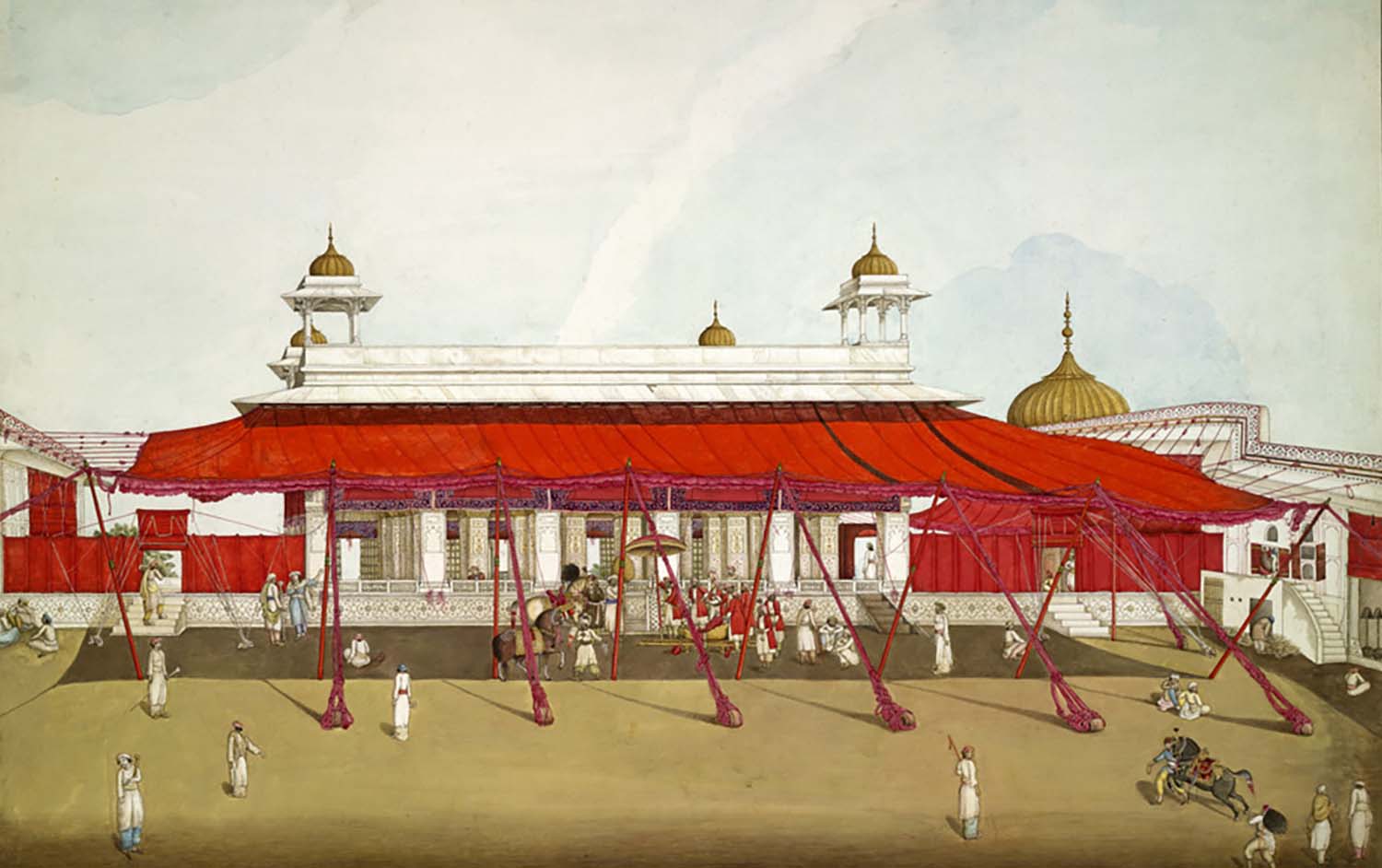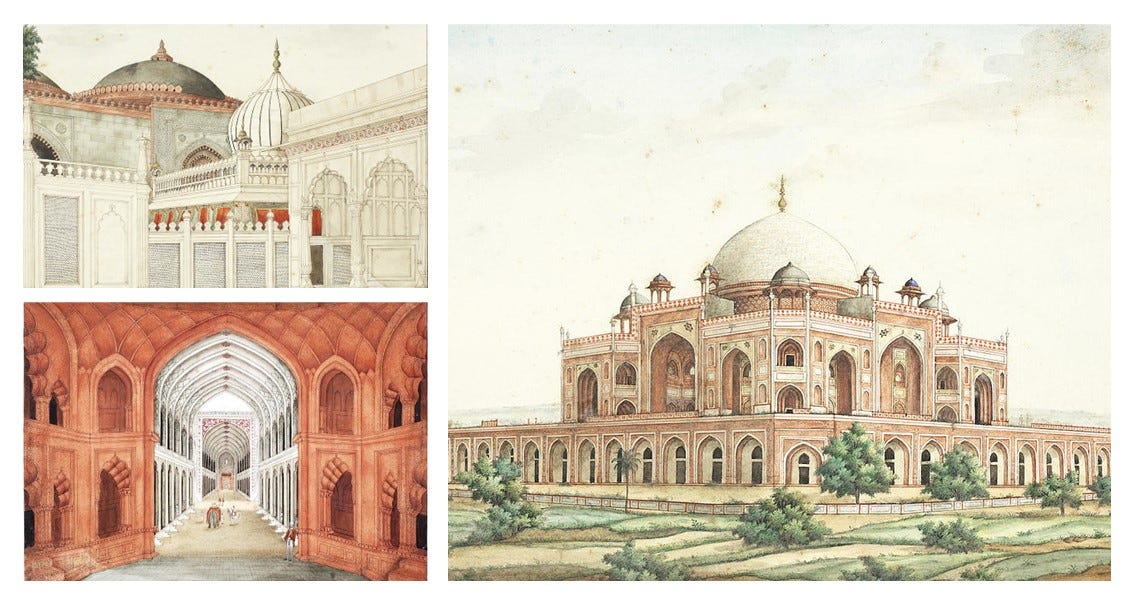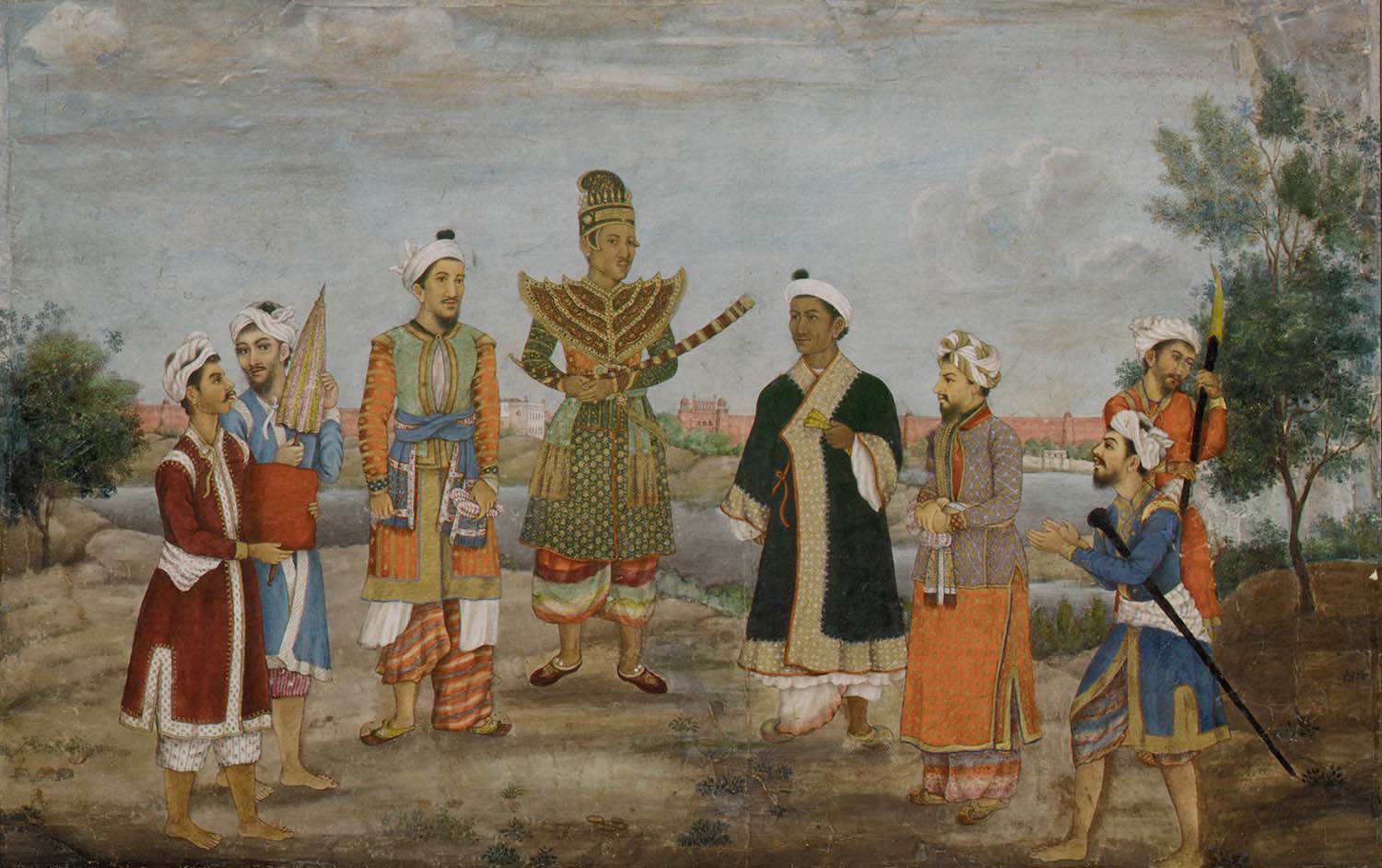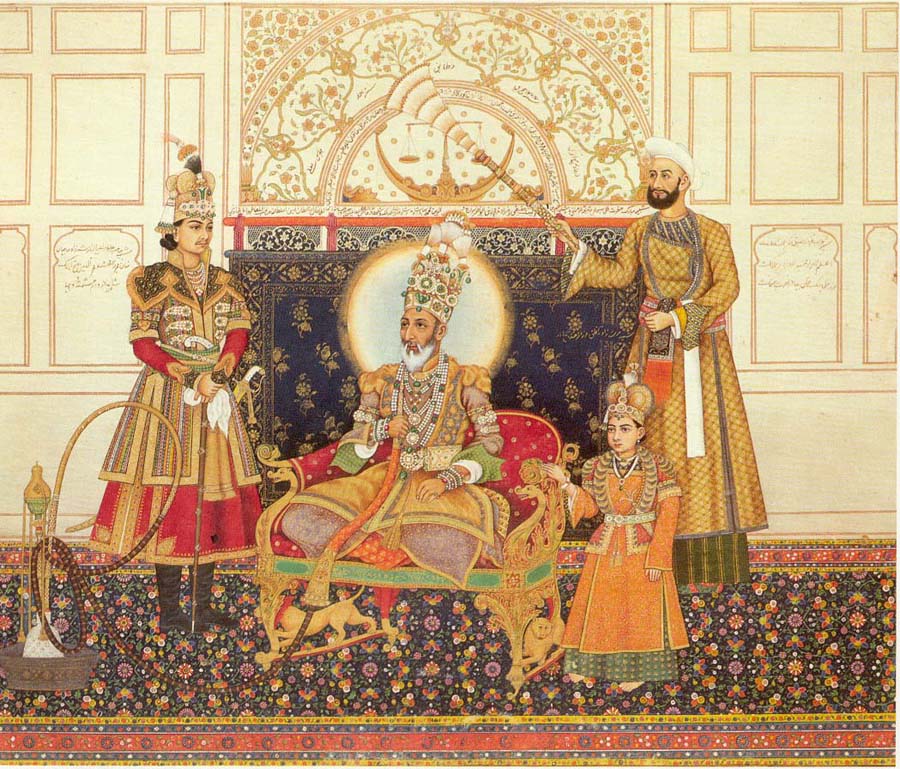In the early 19th century, India went through major political and cultural changes. The Mughal Empire was on the verge of collapse, meanwhile the British East India Company was relentlessly expanding its control. The Mughal emperors continued to support a number of artists despite their dwindling authority. At the same time, the people, architecture, and landscape of India piqued the interest of Europeans, leading British officials and travellers sought to commission paintings from local artists that would help them better understand and document the country. In response, Indian artists began to adapt their work. They combined older techniques with newer subjects to meet the demands of these colonial patrons. Many of them found work with both Indian rulers and British clients.
Ghulam Ali Khan was a well-known painter of Delhi. He was born during the reign of emperor Shah Alam II. He was the last royal painter for the Mughals. His professional career took place over a period of four decades, from 1817 until 1852, but very little is known regarding his private life.

EARLY WORKS:
During the late 18th century, artists started making detailed paintings of Delhi that blended imperial themes with topographical mappings, to indicate that Delhi was a site of Mughal power. The practice reached a zenith in Delhi circa 1815 with the increase of European interest in antiquarianism and archeology. One of Ghulam Ali Khan’s works, ‘The Diwan-i Khas in the Delhi Fort’, created in 1817, is a representation of his early work and focus on topographical painting. His subjects included buildings, shrines, tombs, and other structures of Delhi. These works generally had multilingual ascriptions in Urdu, Latin, and Devanagari scripts. These works were probably produced in sets between 1820 and 1824.

Ghulam Ali Khan is primarily known for being a company painter. The Company school of paintings is a term for the paintings created by Indian artists for European clients associated with the English East India Company. This Indo-European school of paintings used elements of the Rajput and Mughal tradition of painting, and combined them with more Western concepts and elements. The general themes of the paintings were typically nature, animals, landscapes, portraits, and scenes from Indian common life. While he continued to work on his topographical paintings, Ghulam Ali Khan also experimented with portraits as well as painting scenes from the everyday lives of people. During this time, he also started working for a Company officer called William Fraser.

PAINTINGS FOR EUROPEAN PATRONS:
William Fraser was a revenue settlement officer for the Company responsible for assessing the rural territories lying in Delhi. Fraser grew an appreciation for Indian culture and commissioned local artists to produce paintings for his collection, the “Fraser Album”. Ghulam Ali Khan was one of the many artists to work on the album, contributing with paintings depicting Indian villages, soldiers, and noblemen.

In 1827, Khan was commissioned by James Skinner to make a three-part painting series of his cavalry regiment, “Skinner’s Horse”. James Skinner was an Anglo-Indian cavalry officer and a good friend of William Fraser’s. After becoming a part of Skinner’s circle, Khan created portraits of several soldiers and officials. These works were later collected by Skinner in an album containing 42 paintings.

Skinner once vowed to make a church if his life was spared, as he laid injured on a battlefield. As a result, in 1826, Skinner commissioned the construction of the St James’ church. The exterior and interior of St James’ Church feature very detailed paintings made by Ghulam Ali Khan. Khan was also one of the painters of Thomas Metcalfe’s Delhi Book, the principal artist of which was his relative, Mazhar Ali Khan.

PATRONAGE UNDER MUGHALS AND REGIONAL DYNASTIES:
Ghulam Ali Khan was the last royal painter of the Mughals. He worked at the courts of rulers Akbar II (r.1806-37) and Bahadur Shah II (r.1837-58). Ghulam Ali Khan is best known for his work as a company school painter. He, however, defined himself as a Mughal painter, consistently reasserting his Mughal roots, often signing his paintings as a resident of Shahjahanabad and as ‘His Majesty’s Painter’. In February 1827, he was commissioned to paint portraits of Akbar II and Mirza Salim for an important state visit by Lord Amherst (the Governor General of Fort William). For these commissions, Ghulam Ali Khan signed himself as “His Majesty’s devoted faithful servant”.

Khan was also given the task of painting the accession portrait of Bahadur Shah Zafar in 1837-38. In 1851, with the assistance of Zafar’s minister Hakim Ahsanullah Khan, he collaborated with Babar Ali Khan to illustrate the dynastic genealogy, commissioned by Bahadur Shah Zafar, titled “Portraits of the Exalted Emperors”. This genealogy consisted of not just Mughals but of all the dynasties that ruled Delhi, complete with tables listing the births and deaths of the rulers, their portraits, and the representation of their tombs, as well as versified chronograms.

By the 1840s, Ghulam Ali Khan’s patronage had extended well beyond Delhi. He spent over a decade working for regional courts like those of Jhajjar and Alwar. His work for the Nawab of Jhajjar and the Raja of Alwar marked his growing fame. For Raja Banni Singh of Alwar (reigned 1815-57), Khan produced an illustrated manuscript of the work Gulistan (The Rose Garden) of Sa’di. The Alwar Gulistan was one of the most expensive and labour-intensive illustrated manuscripts commissioned in the second quarter of the nineteenth century in India. Ghulam Ali Khan worked with an Alwar artist called Baldev to create seventeen coloured illustrations in the 287-page manuscript.

STYLE OF PAINTING:
There is both reinforcement and conflation of existing stylistic norms and Western techniques. His understanding of style allowed him to experiment and innovate freely within the parameters of his commissions. His early work revolved around topographical paintings. He worked in different styles and subjects – these included portraits, architecture, landscapes, everyday life scenes along with manuscript illustration. He was one of the first artists to move from miniature paintings and use techniques like perspective into his work. In his work for Skinner, Khan’s style shows in the detailed watercolour and gouache paintings of the regiment and estate life in addition to the surrounding land.

Ghulam Ali Khan’s career helps us understand how artists adjusted to and reshaped existing painting traditions. His understanding of style as a product of cultural influence gave him the freedom to explore new methods of painting. His work shows an awareness of the cultural changes in that the Mughal Delhi was going through in the 19th-century.
REFERENCES:
- Sharma, Y., & Dalrymple, W. (2012). Princes and Painters in Mughal Delhi, 1707-1857. Yale University Press.
- https://mapacademy.io/article/ghulam-ali-khan/
- https://sites.asiasociety.org/princesandpainters/the-last-atelier-gulam-ali-khan/
- https://hazelstainer.wordpress.com/tag/ghulam-ali-khan/
- https://darweshdiaries.wordpress.com/2015/01/26/the-fading-of-mughal-painting-ghulam-ali-khan/




